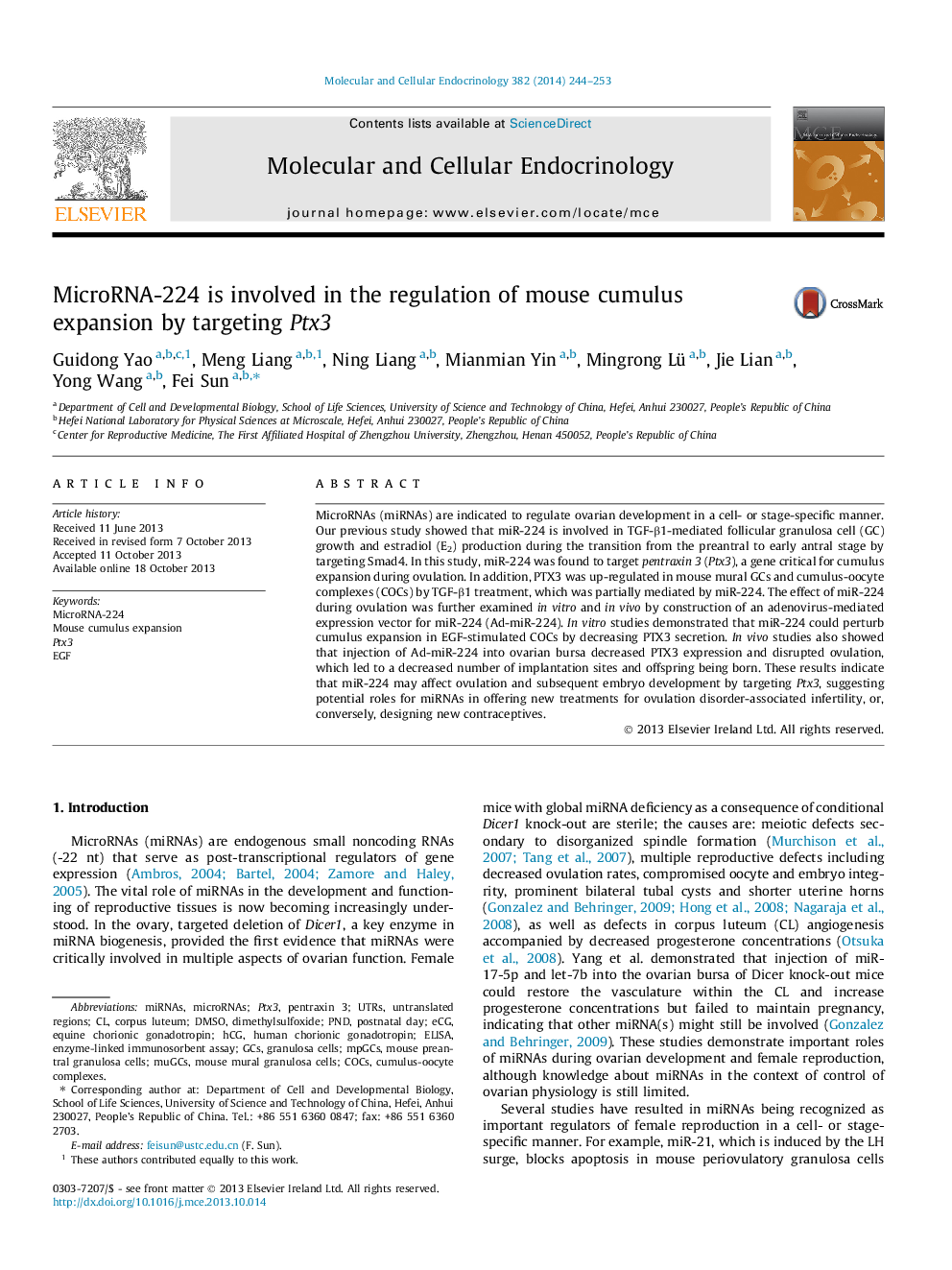| Article ID | Journal | Published Year | Pages | File Type |
|---|---|---|---|---|
| 10956126 | Molecular and Cellular Endocrinology | 2014 | 10 Pages |
Abstract
MicroRNAs (miRNAs) are indicated to regulate ovarian development in a cell- or stage-specific manner. Our previous study showed that miR-224 is involved in TGF-β1-mediated follicular granulosa cell (GC) growth and estradiol (E2) production during the transition from the preantral to early antral stage by targeting Smad4. In this study, miR-224 was found to target pentraxin 3 (Ptx3), a gene critical for cumulus expansion during ovulation. In addition, PTX3 was up-regulated in mouse mural GCs and cumulus-oocyte complexes (COCs) by TGF-β1 treatment, which was partially mediated by miR-224. The effect of miR-224 during ovulation was further examined in vitro and in vivo by construction of an adenovirus-mediated expression vector for miR-224 (Ad-miR-224). In vitro studies demonstrated that miR-224 could perturb cumulus expansion in EGF-stimulated COCs by decreasing PTX3 secretion. In vivo studies also showed that injection of Ad-miR-224 into ovarian bursa decreased PTX3 expression and disrupted ovulation, which led to a decreased number of implantation sites and offspring being born. These results indicate that miR-224 may affect ovulation and subsequent embryo development by targeting Ptx3, suggesting potential roles for miRNAs in offering new treatments for ovulation disorder-associated infertility, or, conversely, designing new contraceptives.
Keywords
Related Topics
Life Sciences
Biochemistry, Genetics and Molecular Biology
Cell Biology
Authors
Guidong Yao, Meng Liang, Ning Liang, Mianmian Yin, Mingrong Lü, Jie Lian, Yong Wang, Fei Sun,
